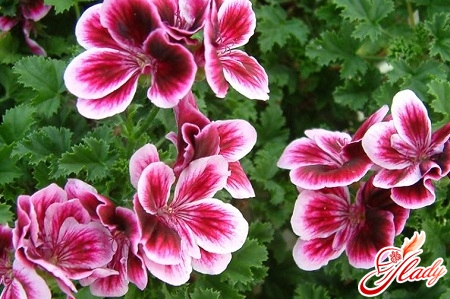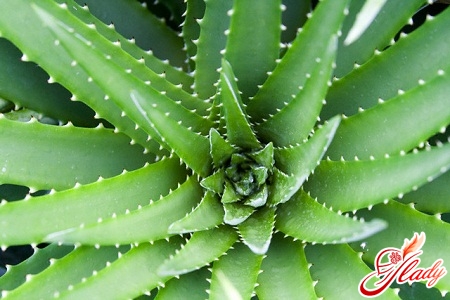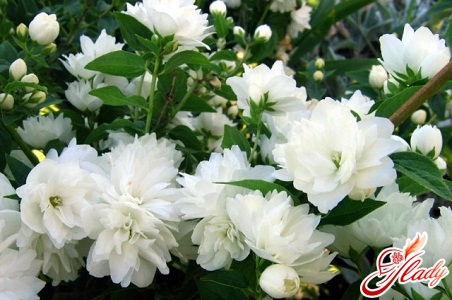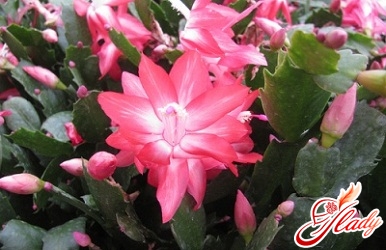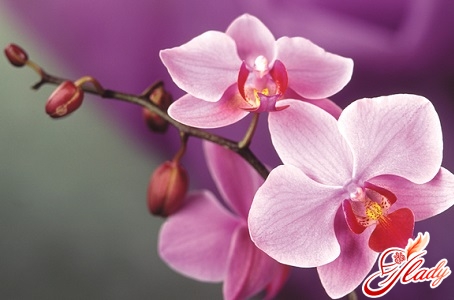 Oh, orchid! The most beautiful decorative flower.Once upon a time, our mothers could not dream of acquiring it. Fortunately for lovers of exotic plants, the orchid has become as accessible as any other flower. The number of available varieties is amazing! However, not all of them are adapted to indoor conditions. Hybrid species have gained great popularity among the available varieties. They are better suited to home maintenance, and you can regulate the dormant period yourself after the orchid has finished flowering. As a rule, this process occurs in winter. Considering the question of what to do after flowering, we will give general recommendations for popular varieties: Phalaenopsis, Cattleya, Aganisia, Vanda. Our advice will allow you to ensure proper maintenance and care. And the main goal in the period after flowering is the growth of a new peduncle and the joyful anticipation of fresh buds.
Oh, orchid! The most beautiful decorative flower.Once upon a time, our mothers could not dream of acquiring it. Fortunately for lovers of exotic plants, the orchid has become as accessible as any other flower. The number of available varieties is amazing! However, not all of them are adapted to indoor conditions. Hybrid species have gained great popularity among the available varieties. They are better suited to home maintenance, and you can regulate the dormant period yourself after the orchid has finished flowering. As a rule, this process occurs in winter. Considering the question of what to do after flowering, we will give general recommendations for popular varieties: Phalaenopsis, Cattleya, Aganisia, Vanda. Our advice will allow you to ensure proper maintenance and care. And the main goal in the period after flowering is the growth of a new peduncle and the joyful anticipation of fresh buds.
Flowering period
Without a doubt, the most beautiful time for orchids– is flowering. Many lovers buy the plant during flowering. And indeed, the most beautiful unusual flowers are so fascinating that we often do not think about the question of whether to buy an orchid or not, how to care for it and what to do next when the flowers fall off. And only then we are faced with the fact that this graceful flower is so capricious and requires such meticulous care that it is not always possible to preserve the pristine beauty of the plant and even more so to achieve its repeated flowering. With proper maintenance, the flowering period of orchids ranges from two to six months. What affects the duration of this process and what should be the care during this time? Phalaenopsis, Vanda - varieties that belong to hybrid orchid species that bloom at any time of the year. But in most cases, everything depends on genetics, favorable conditions of maintenance and the general condition of the plant. In general, care and maintenance of orchids are the same during all periods of plant growth, both during flowering and after, during the so-called dormant period. Of course, there are special rules for caring for orchids at all these stages, and we will focus on them in this article.
General rules for keeping orchids for regular flowering
Lighting Most orchid speciesplaced on the sunny side, but it is necessary to protect the flower from direct sunlight. For example, light plays an important role for regular flowering of phalaenopsis, but there are species adapted to less intense lighting. Considering that there is very little natural light in winter, and too much of it in summer - it would be ideal to keep the orchid on the eastern or southeastern sides. As a rule, with this arrangement, orchids bloom every year. Temperature The range of temperature difference: 23-28 degrees during the day, not lower than 12-15 at night. Some varieties of orchids urgently need differences in day and night temperatures of four to five degrees to stimulate flowering. If you cannot provide the necessary difference in daily temperature, your orchid will bloom very rarely. As a rule, higher daytime air temperatures lead to intensive growth of leaves, inhibiting the growth of the peduncle. At the same time, you should not make the air temperature higher in winter than it usually is in summer. On the contrary, during the winter dormant period, the plant can be shaded a little and cooled around it. Humidity Orchids are tropical plants, so the humidity of the environment within 50-80% is important for them. Spray the flower more often and place the pot on a special tray with water, but do not forget that the roots of the plant should not touch the water. Otherwise, there is a high probability of over-watering and, as a result, rotting of the root system. Which, in turn, leads to the death of the entire plant. Watering The main rule is not to allow the soil to dry out completely or, conversely, not to make the soil too damp. The soil in the pot should always be slightly moistened, but not wet. After the orchid has bloomed, it is recommended to reduce the frequency and volume of watering during the dormant period. Feeding Like any other plant, the orchid needs additional fertilization of the soil. It is enough to feed the flower twice a month, and this should be done in between flowering. Purchase fertilizers specifically formulated for orchids.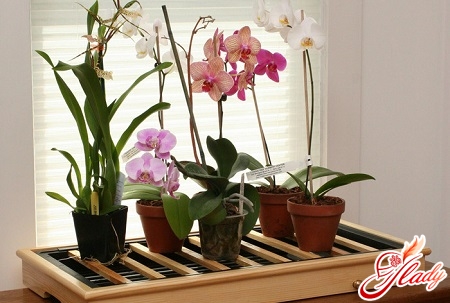
When the orchid faded away
A beautiful orchid in the apartment always deliversмассу положительных эмоций и эстетическое наслаждение, и тем печальнее момент, когда растение отцветает. У неопытных цветоводов закономерно возникает вопрос – что же делать после того, как орхидея отцвела — срезать высохшие цветы или оставить цветонос? Появятся ли дальше новые бутоны и какой уход за растением для этого требуется? Не зная особенностей цветения орхидей, некоторые любители сразу срезают весь цветонос. Но такое решение преждевременное -не нужно этого делать. Для начала убедитесь, действительно ли орхидея окончательно отцвела. Осмотрите кончик стебля и его боковые ветки, там можно обнаружить новый растущий кончик. И если он все еще зеленый и не поврежден, то высока вероятность, что цветение еще не закончилось и могут появиться новые дополнительные бутоны. Это явление может произойти как во время основного цветения, так и спустя один-три месяца после опадания всех цветов. Хотя может статься и такое, что этого не произойдет, даже если растению и обеспечен необходимый уход. Если кончик засох, изменил цвет, стал желтым или черным, скорее всего не стоит ждать новых бутонов. Что же делать в этом случае? Есть два пути: срезать цветонос под основание или чуть выше крайней «спящей точки». У многих разновидностей орхидей имеются по несколько «спящих» почек (меристемы), покрытых защитной чешуйкой. В теории все эти почки по мере роста растения должны пойти в рост, формируя боковой цветонос, или дать «детку». Как вариант можно попробовать получить на старом стебле повторное цветение.В таком случае его следует срезать на два-три сантиметра выше почки. Вот тут самое непредсказуемое: нет никаких гарантий, что новые почки проснутся, как бы вы ни старались ухаживать за своей любимицей. В таком состоянии обрезанный цветонос может простоять и год, а потом взять да и засохнуть от старости. К тому же растение все свои накопленные питательные вещества бросает на поддержание старых цветоносов, тем самым тормозя развитие новых. Рост «деток» — вообще процесс неконтролируемый у орхидей. В большинстве случаев, в том числе у популярного и довольно неприхотливого к комнатному содержанию вида орхидеи — фаленопсиса, это — явление наследственное. Он может дать два-три потомства на каждом цветоносе, превращая цветок в декоративные заросли. Другие виды, напротив, скупы на образование «деток», даже несмотря на специальную подкорму для роста и скрупулезный уход. Внекоторых книгах о правильном содержании орхидей приводится такая информация: при температуре содержания 16-18 °C и при относительно оптимальной влажности (зимой) скорее всего из почки вырастет цветонос, а при температуревыше 25 °C (летом) – детка. Пересаживать в отдельный горшок «деток» нужно только после отрастания у них собственных корней. Достаточно дождаться минимум три корня по четыре-шесть см. Однако если вы заметили, что цветонос полностью изменил цвет, то есть теперь он не зеленый, а, например, коричневый, грязно-желтый, или фиолетовый, и при этом он стал засыхать, нет никаких сомнений – орхидея действительно отцвела.На ранней стадии не стоит его сразу удалять, растение в это время перераспределит накопленные в отмирающем стебле питательные вещества, необходимые для дальнейшего роста орхидеи. А вот полностью высохший цветонос самое время срезать, и отрезать его надо как можно ниже.
Period of rest, or interflow season
Caring for the plant after flowering is not difficult.differs from other periods. The orchid still needs sufficient watering, humidity, lighting, regular disease prevention and inspection for pests. You can slightly reduce the frequency and volume of plant feeding during the dormant period, and if necessary, transplant the flower into a new pot. The "wake-up call" about the need to transplant the plant will be roots sticking out of the bottom hole of the pot and rapid drying of the soil after watering. As a rule, the need for transplantation arises after two to three years. Transplantation In order to remove the orchid from the pot as carefully as possible, you must first water the plant generously and carefully remove it without damaging the roots. Sometimes moss can be found on the roots, it should also be carefully removed without straightening the roots themselves. Inspect the root system: cut off dried, blackened shoots. Healthy roots are hard and light in color. It is recommended to select a substrate for the pot from several components. These include:
- Pine bark or cones - main drainagecomponent. The bark needs to be collected from healthy trees, only necessarily disinfect it and dry it. Large pieces should be laid on both the drainage layer and in the center of the pot. In addition, the pine bark or split scales of cones can be used for decorative purposes. As a drain, you can also use rubble, clay crocks, brick crumbs.
- Charcoal - a universal antiseptic and absorbent, perfectly supports the water balance in the soil. However, its content in the substrate should not be more than 10%, since coal accumulates salts.
- Leafy earth is the main component in the substrate. Fallen foliage during decomposition will serve as a natural food for the orchid. In addition, beech leaves, for example, promote the development of useful microflora in the soil.
- Moss-sphagnum - is necessary for looseness and conservationmoisture in the ground. To do this, cover the top layer of soil with moss pieces, scalding it first with boiling water, and then drying it. In addition, sphagnum contains a large number of substances, so necessary for plant growth. Moss should be changed every six months.
It is recommended to use clay orplastic pot. The advantage of such a pot is that clay provides excellent air exchange and moisture distribution throughout the pot. The disadvantage is the rough surface, to which roots sometimes grow quite strongly, and separating them later is quite difficult. This problem can be solved by purchasing a glazed clay pot. An ideal option for beginners is a transparent plastic pot, through the walls of which you can observe the condition of the root system. Plastic does not accumulate salts, the soil in it dries more slowly. Another necessary condition when choosing a container for planting an orchid is a mandatory hole at the bottom of the pot, and preferably more than one. When replanting the plant, be especially careful with the roots. The flower should be immersed at the same level as in the previous container. There is no need to water after replanting, the best thing is to spray it generously and leave it alone in a damp, shaded place for two to three weeks. By following all the rules of replanting and providing delicate care, in a few months you will see the long-awaited flowers again. But it happens that repeated flowering will please you only after a year. Or it may happen that the plant is absolutely healthy, but has not bloomed for a long time. Most likely, optimal conditions have not been created for flowering. Review the recommendations described above: is everything in order - light, temperature, humidity? It is not at all difficult to adapt to these rules: move the orchid, buy a special photo lamp and a humidifier.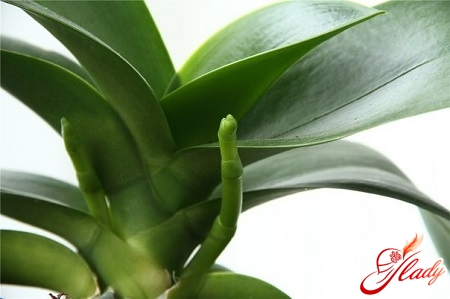
Useful tips for orchid lovers
Besides the traditional way of growing orchids(in pots), there is another original method - growing on wooden blocks or on a pine bark lattice. Since orchids are epiphytic plants, that is, they use another support for growth, then in an apartment you can easily imitate natural conditions by constructing such a platform. For initial growth, the plant is carefully tied to the bark or blocks. In the future, the orchid itself will attach itself with a developed root system. But for the successful maintenance of this plant, it is necessary to provide high humidity (more than 90%) and frequent spraying of the roots. With such an original method, you need to care for the plant in a generally accepted way. Such precious orchid species as Macodes, Gemaria, Anectochilus grow well in glass containers (for example, you can use small aquariums). Their main value is not flowers, but beautiful leaves. They also need high humidity, but easily adapt to lack of light. Use sphagnum moss to reserve moisture in the soil. In general, caring for leafy orchids is no different from caring for traditional popular species. The orchid is capricious to frequent rearrangements from place to place, does not like constant turns. It is difficult for the plant to adapt its organs to the surrounding conditions so often. Adapting to a particular position in space, the flower eventually develops its own individual feature of growth and development. Getting into new conditions, the orchid, instead of growing further, spends energy on adapting to them. If you want to see a frequently blooming plant, the main and irreplaceable condition for its maintenance will be your care, love and timely care. This plant needs a permanent owner, the orchid gets used to the hands of its grower and reacts sensitively to any changes. Do not forget to care for the plant, inattentive attitude will adversely affect the flower and lead to its death. Diligent, attentive, caring owners will admire exquisite orchids for a long time and enjoy the anticipation of new flowers.




